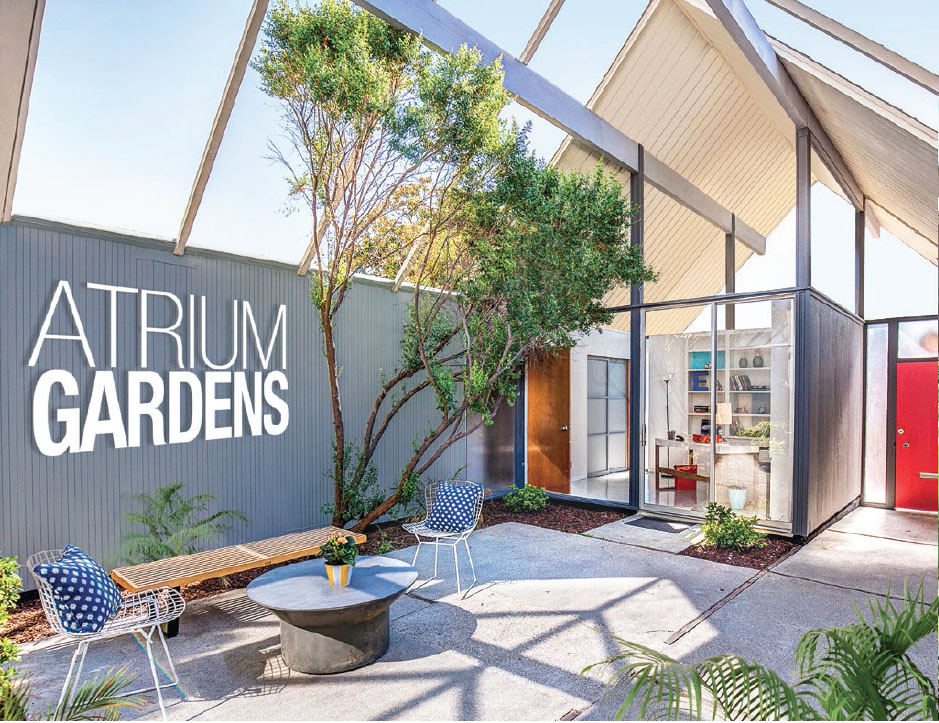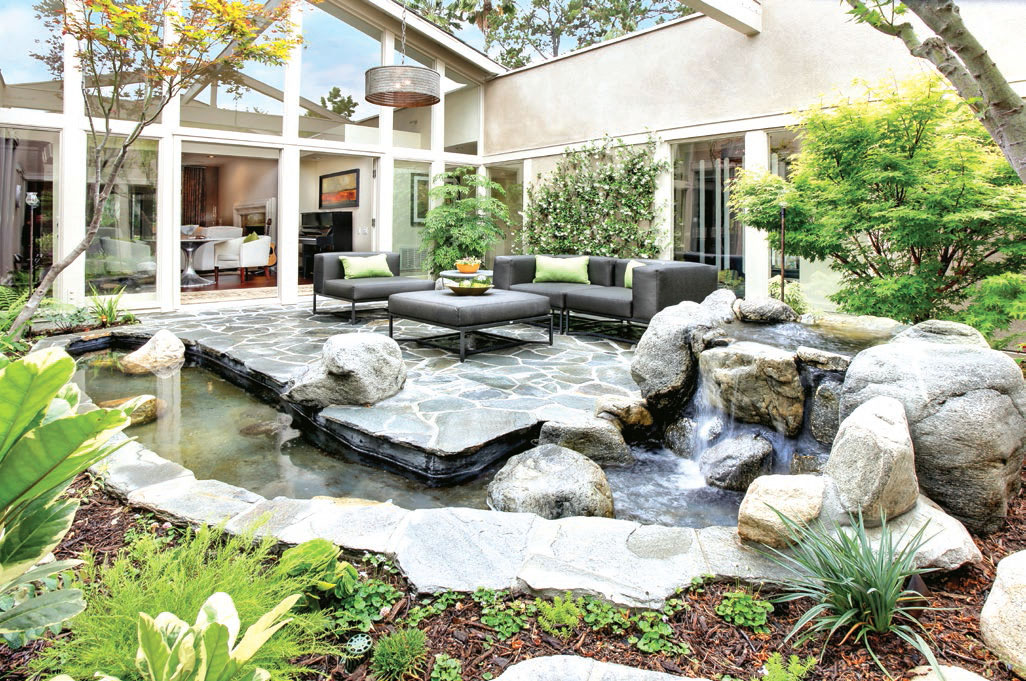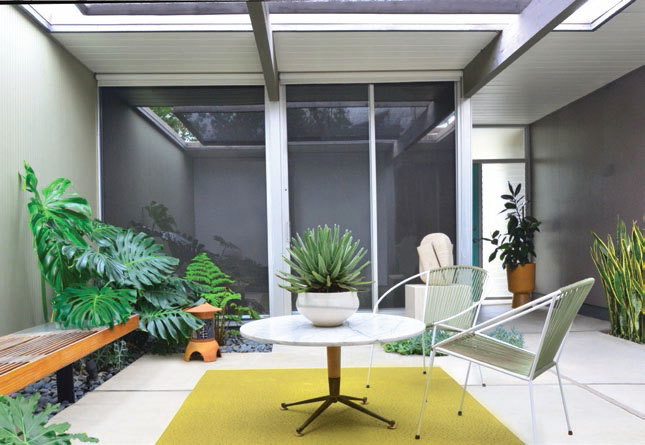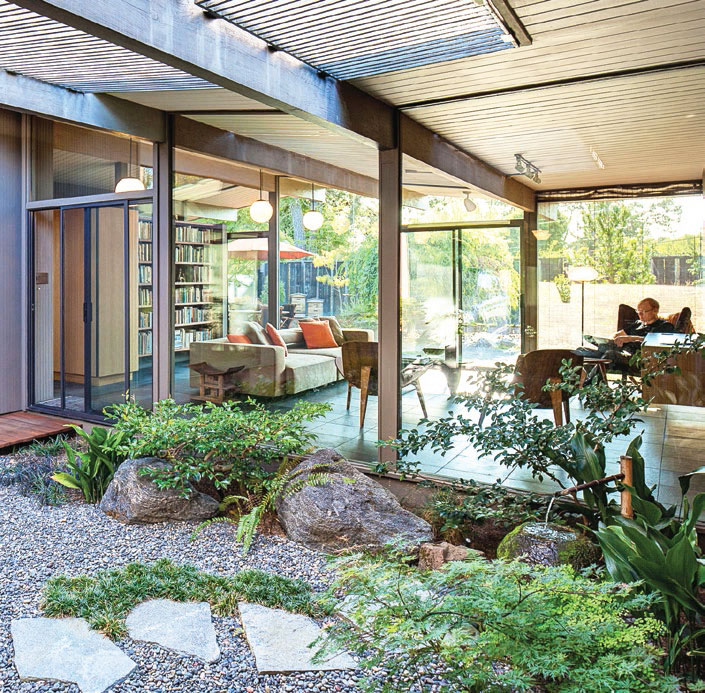Atrium Gardens
 |
|
|
The atrium is perhaps the most unique and well-loved space in an Eichler home.
This icon of indoor-outdoor living provides drama and additional living area and creates a wonderful transition to a home's interior space. In the transparency of a window-walled atrium, there is magic in the fact that there is literally nothing but glass between you and your own private garden.
An atrium can be embellished in a myriad of ways, bringing the décor and colors of the home into the space, or by introducing a completely different look. Enclosed on four sides but open to the sky, an atrium can serve as a casual patio or formal garden, or get reimagined in whatever style that suits your fancy.
Designing for an atrium garden is a process just like any other landscaping project. But since atriums are also lined with a combination of wood walls, expansive glass windows, and sliding-glass doors, there are a number of important factors to consider.
Let's delve into the planning phase of designing your own atrium garden by considering some important moves to make along the way, even before picking up a shovel.
 |
|
|
LOCATION & CLIMATE
When designing an atrium garden, geographic location and regional climate differences are important factors to consider. An atrium project in a hot climate needs to be planned differently than one in a cool or foggy zone.
For example, "the Monstera deliciosa, one of my absolute favorite plants, would fry in Terra Linda or Cupertino," points out landscape architect JC Miller of Miller Studio LA. "So, for best results, you have to bring in appropriate plants for your particular location."
Due to its inherent design characteristics, an atrium has its own individual challenges and 'microclimate.'
"While they're open to the sky, atriums are re latively small spaces with vertical walls and only a limited amount of direct sunshine overhead [each day]," Miller explains.
 |
|
|
Another challenge is heat and the reflected heat radiating off of hard surfaces. "There can be times," he says, "when the sun can really be beating up against a wall, and plants can be subjected to very warm conditions for three to four hours, yet be in shade for the rest of the day."
The solution for that scenario lies in selecting plants that can tolerate a wide range of conditions. Some plants are more ideally suited for an atrium than others.
Granada Hills Eichler owners Dante Pascual and Bill Huntley designed their atrium garden to achieve a classic mid-century Southern California look in their Balboa Highlands home. Utilizing a screen covering to shield the atrium from the hot San Fernando Valley sun, they planted tropical varieties, including a hedge of durable Sansevieria.
"If ever there was a fail-safe plant, the Sansevieria is it," Pascual says. "I have neglected them even when it was 115 degrees in order to mind my sun-sensitive plants. But Sansevierias don't care—not one of them got burnt!"
 |
|
|
JC Miller recently revisited an Eichler atrium project in a multiple-unit Palo Alto building that he originally designed and updated for its homeowners. There, he performed a sun/shadow study, and added new, deep planters.
"Though this three-story project has deeper, longer shadows than a typical residential atrium, you can test your own home atrium by simply standing in your atrium and checking for hard shadows with your hand," he pointed out.
Since a plant will position its leaves where it gets sun, "look for shadow," Miller says. "If you hold your hand out and see a good, strong shadow coming down onto the planting area, you probably have enough light."




